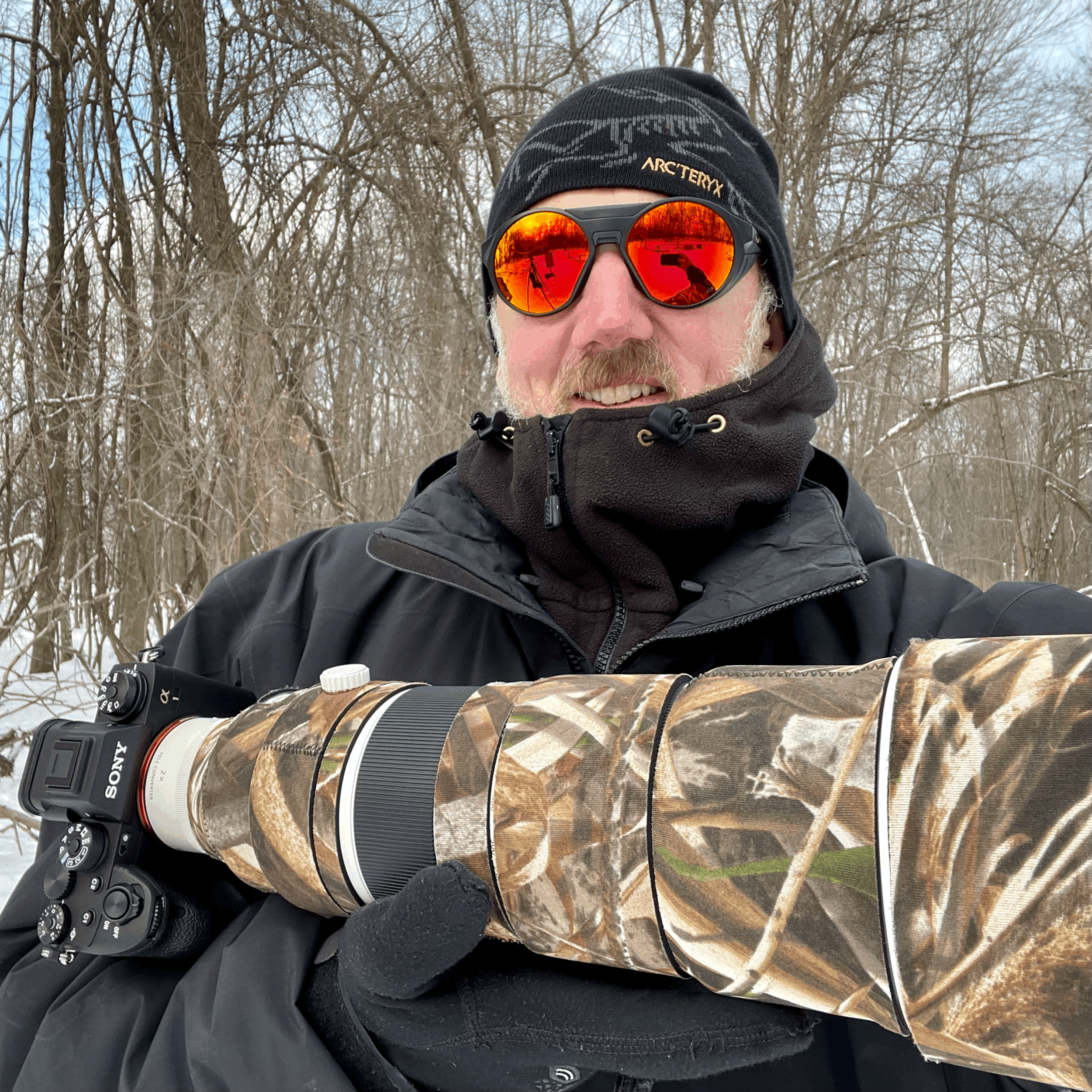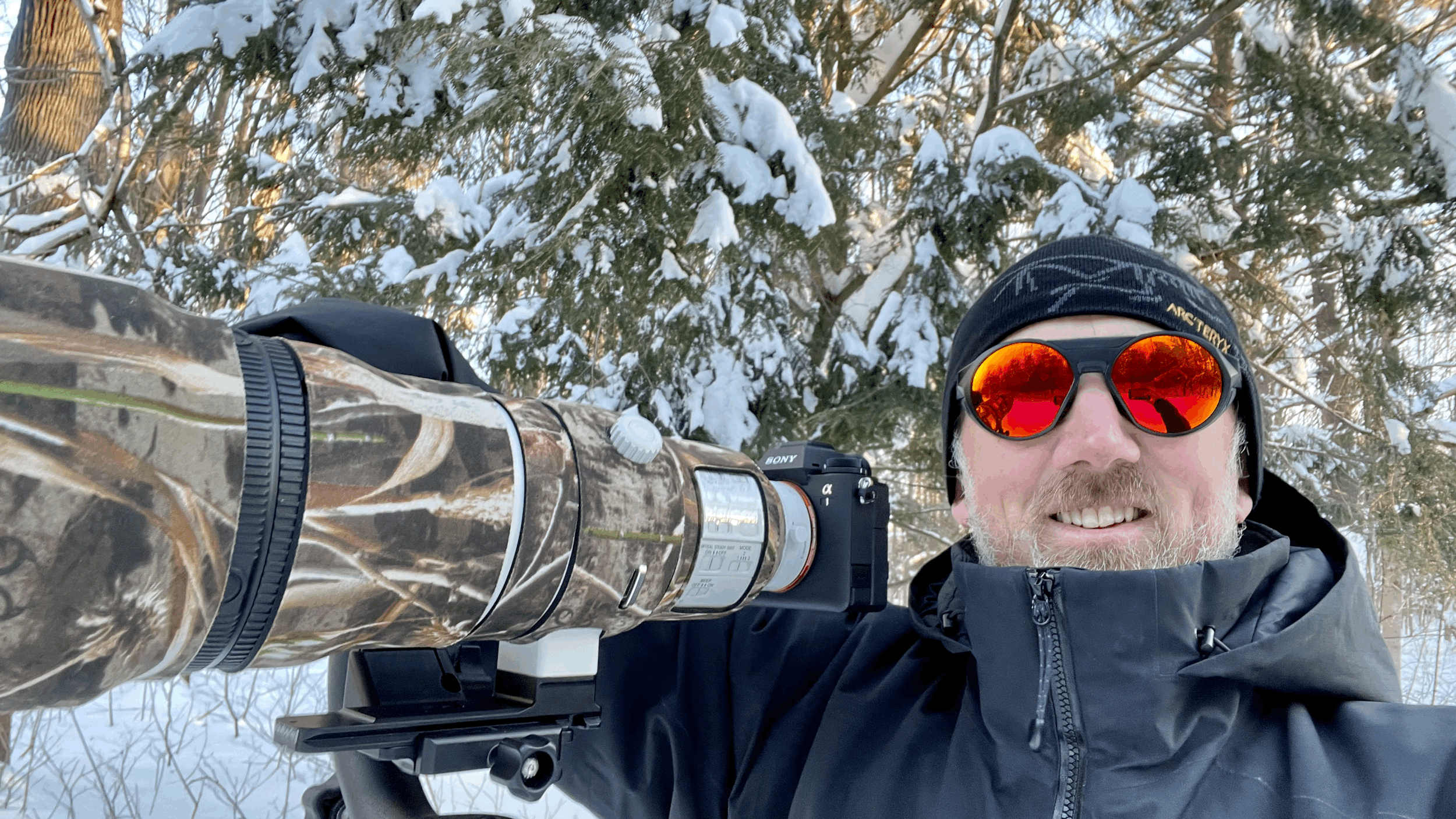I have spent a week immersing myself in the wonder of the new Sony Alpha 1 digital mirrorless camera from the perspective of a bird/wildlife/nature photographer. If you want the quick and easy answer from the end of the review: This is the best action, birds-in-flight, and all-around digital camera that I have ever used. Amazing image files, blazing-fast auto-focus, and capture rate: it is the new King of the digital camera world. There is no more need for a separate high-speed and high-resolution camera body: this is the all-in-one professional camera body we have all been waiting for and Sony has delivered..... and I haven't even mentioned the 8K video yet ;)
I'll skip copy & pasting all of the camera's specifications that can easily be found on the Sony A1 product page, so click HERE to see them all. What I will do is talk about the things that are important to me and what I do.
Like the a9II, the A1 feels light and comfortable in my hand. I have grown to love the small form factor, and intuitive dial and button placement. The new color touch menu has carried over from the Sony a7SIII, and I find it easy to navigate and in a logical order.
The new Electronic View Finder (EVF) is better than anything I have ever seen in a camera with 9 million dots and .9X magnification; it is big, bright, and fast. The high-quality mode is spectacular.
The new bird eye auto-focus is exclusive to the a1, and works remarkably well. I programmed a button to instantly switch between bird and animal eye auto-focus. I would have loved to test it on small and fast birds in flight, but seasonal variations in available species and local COVID-19 restrictions made that impossible. I was impressed with the bird eye AF on the larger owls and raptors that I was able to find, but they are large and fly relatively slowly. The a9 and a9II both excelled here, so I expect that the a1 will be just that much better. I was able to verify the autofocus acquisition speed is greatly improved over the a9 and a9II, which was already extremely impressive. Sony states that the camera can confirm sharp focus 120 times per second (twice as fast as the Sony a9 and a9II). This not only helps the camera snap into focus quickly but ensures AF accuracy between frames when shooting at 30 FPS: truly mind-blowing performance! I have seen a few reviews that mention the camera sometimes jumps between the bird's eye and shoulder when pointed at a static bird on a perch, and I did experience a little of this particularly when photographing a dark bird with dark eyes and especially while using extreme focal length (particularly the 200-600 with the 2X installed), but the overall performance is what is important to me, and it is exceptional: noticeably better than the already impressive a9 and a9II. I do expect that there will be a fair number of people complaining about this feature (bird eye auto-focus), as we should have reasonable expectations: if a crow or raven is gliding towards me at a high altitude, I wouldn't expect the camera to be able to see, let alone lock onto its eyes - smile.
I immediately set the camera to compressed RAW to be able to achieve the full 30 FPS capture rate and the resulting +/- 57MB files are better than anything that I have seen: More details, less noise, richer color, and more dynamic range. I was unable to see any difference between images made using the electronic shutter and those made using the mechanical shutter. I want to be crystal clear that I won't be able to extract the most out of the RAW files until Adobe or Capture One releases an update to their RAW conversion software. Sony's Imaging Edge Software is the only way I can see the files, and I have always been able to squeeze so much more from either Adobe or Capture One (perhaps due to my lack of understanding of the software, rather than software shortfall, I dunno). So I do expect to be even more impressed as these software updates are released.
I had planned to release my mini-review earlier this week but wanted to hold out and see if anyone found any weaknesses that I could debunk here. I am glad I waited because a lot of attention went to a review video that states that the camera is not capable of shooting 30FPS. It turns out that they used the Sony 70-200 f/2.8 GM lens which needs a firmware update to achieve the full 30FPS that will be released sometime soon. I tested the a1 with my workhorse lenses (and teleconverters) and can confirm that the following lenses and teleconverters are all capable of capturing 30FPS in COMPRESSED RAW (The capture rate is slower using uncompressed RAW):
Sony 600/4 GM
Sony 600/4 GM with 1.4X
Sony 600/4 with 2X
Sony 200-600
Sony 200-600 with 1.4X
Sony 200-600 with 2X
An interesting find was how well the affordable 200-600mm worked with both the 1.4X and 2X, and it was able to maintain the 30FPS capture rate with the 2X in APS-C mode which resulted in a 23-24MB file during my tests. The 200-600 is a great and affordable lens that costs about 20% of the prime 600/4 GM, so there are trade-offs. The AF acquisition and tracking speed are slowed down and the image quality is slightly degraded when the 2X is used, but it still offers remarkably good results. It is not likely I would use the 1,800mm for birds in flight because there would be too much atmospheric compression degrading the image quality, but I do see using this combination extremely close for incredible close-up details at the minimum focusing distance of the combination.
I am grateful that the two card slots accept both CFexpress type A or SD memory cards. While I used the CFexpress type A card that came with the loaner unit for most of my testing, I did test my 128GB Sony SDXC SD Type G memory cards to see if I needed to invest in new cards. There was little to no difference in capture rate, but an obvious difference in write speed. The camera has an impressive buffer, and I don't typically hold down the trigger for more than a short burst, so I don't expect to be buying new memory cards anytime soon. I can confirm that you can now change menu settings and review images while the camera writes to the memory card to clear the buffer.
Another bonus is the a1 used the same NP-FZ100 battery as the a9 and a9II, so I was pleased that my extra batteries will still be useful.
In closing, this is the best action, birds-in-flight, and all-around digital camera that I have ever used. Amazing image files, blazing-fast auto-focus, and capture rate: it is the new King of the digital camera world. There is no more need for a separate high-speed and high-resolution camera body: this is the all-in-one professional camera body we have all been waiting for and Sony has delivered..... and I haven't even mentioned the 8K video yet ;)
Stay tuned to this blog for images made with the Sony a1.
Canadian Nature Photographer Christopher Dodds with the new Sony a1 camera, Sony 600mm f/4 GM lens and Sony 2X extender.

